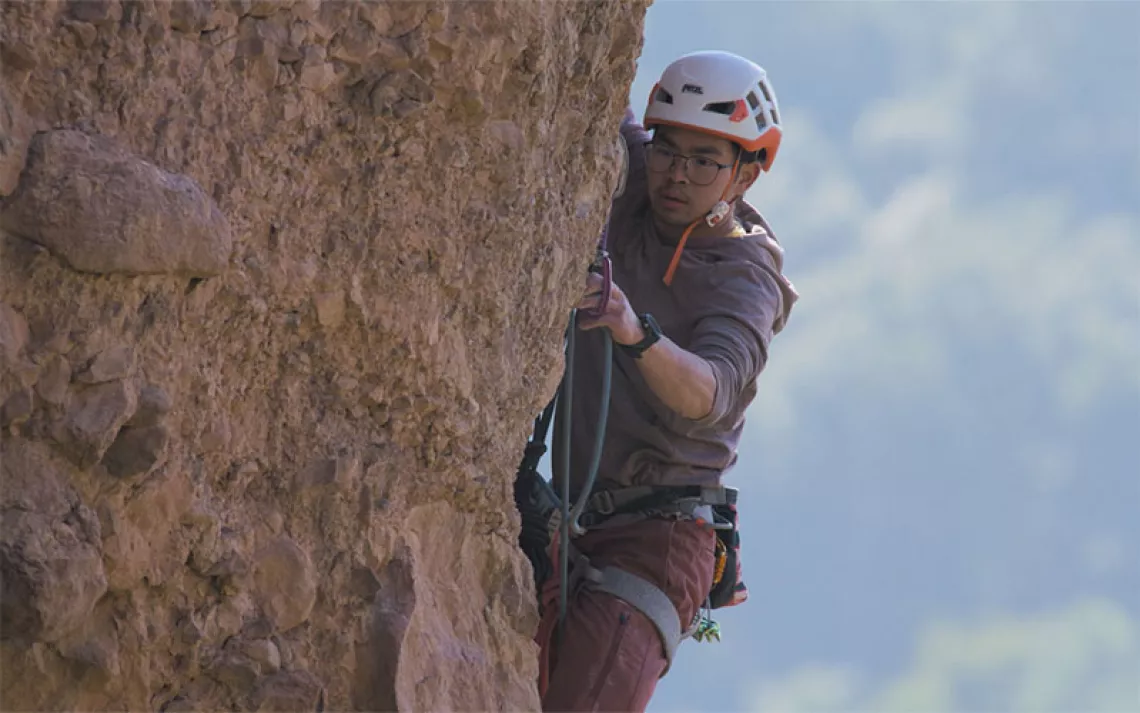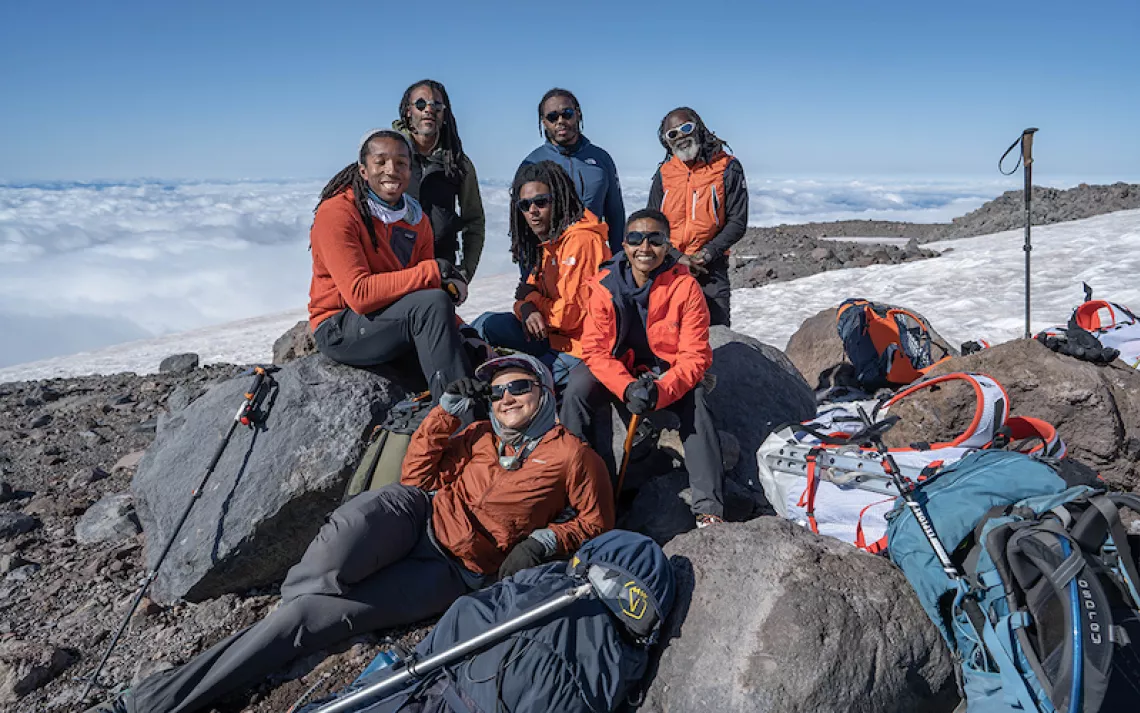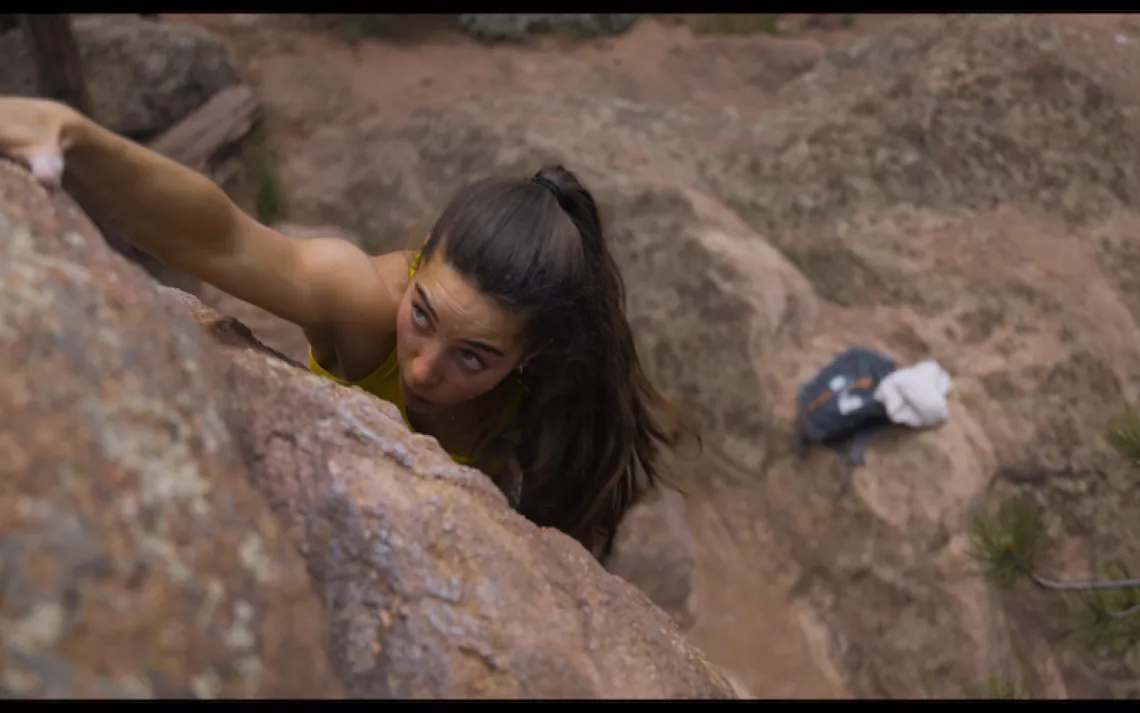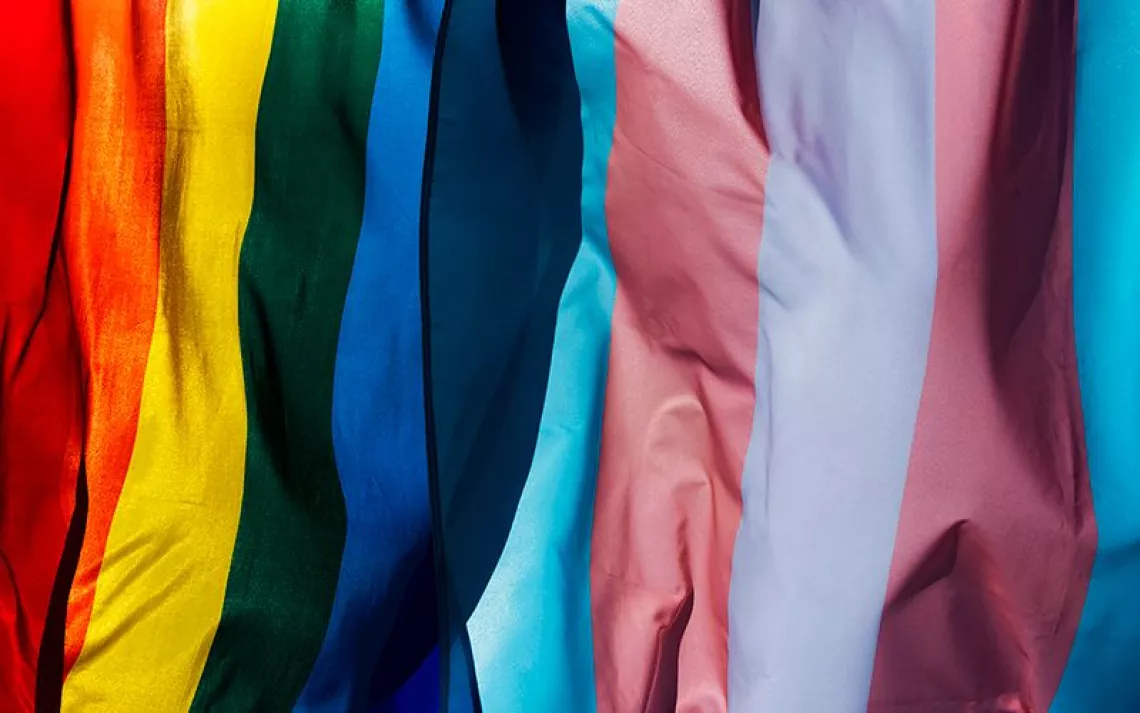An Indigenous Athlete Climbs Toward Equity
CHamoru rock climber Briana Mazzolini-Blanchard builds inclusive community
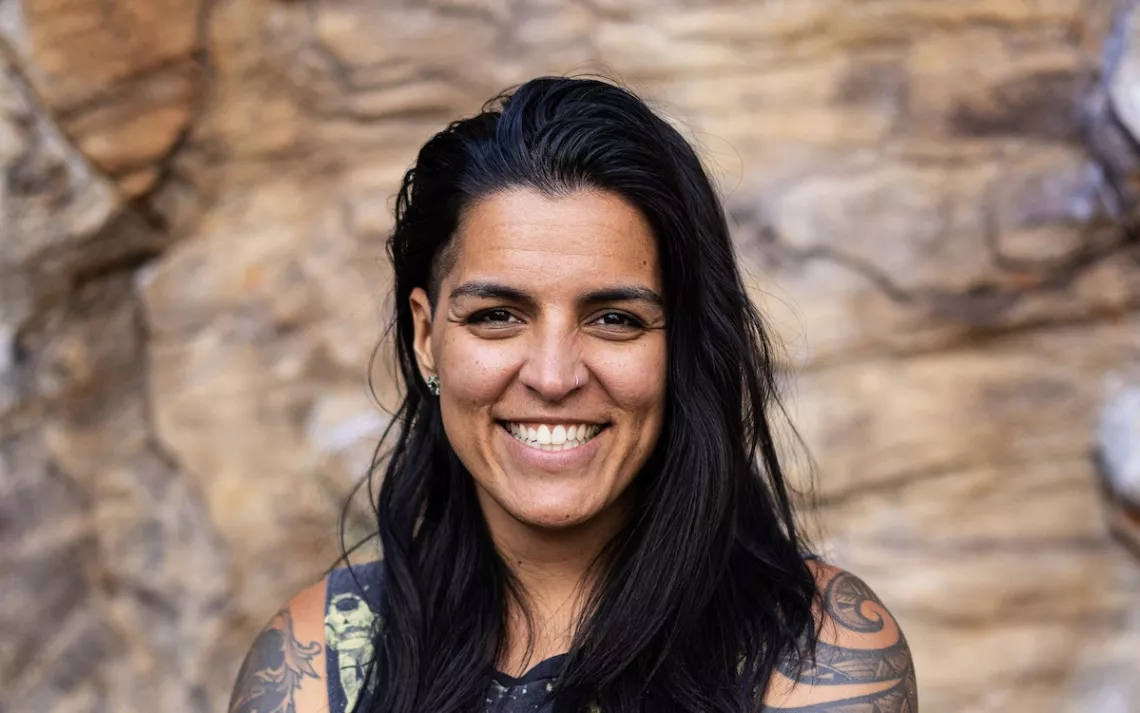
Photo by Nikki Smith
Standing in front of a boulder in eastern Kentucky last April, Briana Mazzolini-Blanchard was moving her hands through the air as she planned a series of moves with utmost focus.
The rock climber had been working this sequence since early March. And while Mazzolini-Blanchard has made progress with each trip from her home in Cincinnati, Ohio, she’s yet to nail the challenging final motions, which require moving her right hand from a tiny, torso-high lip of rock to a sloping hold at the very top. This climb, called Cabbage Patch, has it all—nuanced footwork, varied holds—but it’s never been climbed by a woman. She is determined to be the first.
Mazzolini-Blanchard, who traces her CHamoru ancestry to the now US territory of Guam, hopes that by getting more first ascents (FAs) on climbs like this one, she’ll chart a course for other people of color and women in a historically white- and male-dominated sport. “I never see any female FAs in Mountain Project,” said Mazzolini-Blanchard, referring to a website where climbers share their accomplishments.
That’s not to say women aren’t climbing the hardest stuff in the world; female climbers are among the sport’s top athletes. But men still outnumber women at most outdoor rock-climbing areas, and US climbing also remains overwhelmingly white. Making diverse climbers more visible could change that, Mazzolini-Blanchard believes.
“It’s important we start showcasing more Black, brown, Indigenous, adaptive, and queer athletes,” she said. While Mazzolini-Blanchard credits the sense of community she’s found while climbing as one of the sport’s biggest draws, she also wishes she’d encountered greater diversity back when she was a novice. Research shows that racial, ethnic, and gender representation matters, shaping the self-image and sense of belonging necessary to visualize and, ultimately, achieve success. Increasing representation and role models in the field can mean reducing one of the many barriers to entry.
Mazzolini-Blanchard is eager to see more faces, perspectives, and backgrounds like hers. She would have felt more comfortable in climbers’ spaces like rock-climbing areas and gyms if she’d noticed more BIPOC athletes in the sport’s magazines and guidebooks, she explained. “You cannot be what you cannot see,” said Mazzolini-Blanchard. “If I don’t see anyone who looks like me, it’s hard to feel a sense of belonging or a sense of safety, especially when history tells me that I don’t belong there.”
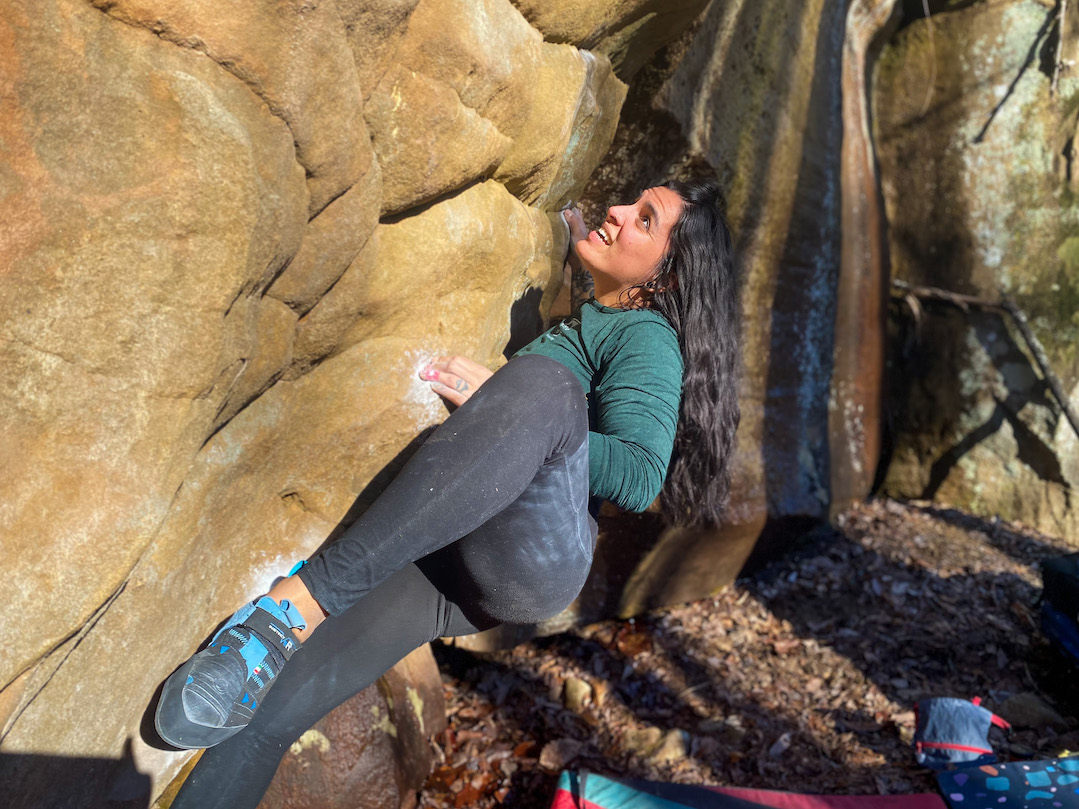
Photo by James Blanchard
Aiming to bridge this gap for other prospective climbers, she founded a free, recurring climbing gym event called Climb L8. It’s a point of entry for first-time climbers and people from marginalized groups, a chance to try the sport without buying pricey equipment or an expensive gym membership. In addition to her full-time work as strategic partnerships manager at the climbing advocacy organization Access Fund, Mazzolini-Blanchard also volunteers on the board of the Red River Gorge Climbers Coalition (RRGCC), where she is one of just two women, and the only Indigenous voice.
At RRGCC, supporting climbers with disabilities and diverse backgrounds is a key focus. Though adaptive climbing technologies have improved in recent years, steep trails to climbing areas remain a major barrier for many athletes. While serving as chair of RRGCC’s Education, DEI, and Outreach committee since its inception 2.5 years ago, Mazzolini-Blanchard has advocated for flatter, wider trails to the rock. She’s also helped shift the coalition’s focus from solely land acquisition and conservation to the work of growing a more diverse and engaged community.
“We must recognize the leg up white, nondisabled people have had in the outdoor industry,” she said. “In climbing, a lot of the first ascensionists were white men, but that’s in part because of access to these spaces. They weren’t discriminated against. They were legally allowed to be there.” She’s referring, in part, to Jim Crow laws barring Black Americans from many state and national parks, and discrimination that minority groups still face in public parks and recreational spaces. Many people of color continue to feel unwelcome in the outdoors—unable to enjoy themselves and feel safe—contributing to an equity gap in the climbing community and beyond.
Representation isn’t the only thorny issue the climbing community’s grappled with in recent years. A few climbing areas, such as Wyoming’s Bear Lodge (Devil’s Tower), are considered sacred by Native Americans, prompting tension over yearly closures for ceremonies. And in 2021, a scandal unfolded after a rock climber discovered metal bolts defacing 1,000-year-old petroglyphs in Utah.
For Mazzolini-Blanchard, respecting these Indigenous places and traditions is essential to environmental stewardship, and a way to honor her own CHamoru roots. “Indigenous communities and Native tribes all across the world are not a monolith; however, one of the things that does remain consistent throughout is the perspective of the land,” she said. “It is there to be cared for and stewarded because as it gives to us, we give to it.”
This year, she paired up with Native Hawaiian climber Skye Kolealani Razon-Olds to found the online platform Indigenous Field Guide, building a website to highlight Indigenous perspectives on outdoor etiquette and mindful recreation. There, IFG invites athletes to sign a pledge to honor Indigenous traditions, sovereignty, and customs: The pledge’s tenets range from not taking cultural objects as souvenirs to observing closures for Indigenous purposes and native species. IFG also serves as a hub for finding Indigenous-led initiatives across North America and showcases the work of regional groups, such as Razon-Olds’ Hawai'i-based Kanaka Climbers.
But as Mazzolini-Blanchard works to build a more inclusive, respectful climbing community, she’s taking it one day—and one climb—at a time. With every first ascent she achieves, and in each new leadership role she takes on, she wishes to make it a little easier for more folks like her to follow. For now, her objective is that challenging final move on Cabbage Patch. She’s pretty confident that she’ll pull it off by the end of this year.
 The Magazine of The Sierra Club
The Magazine of The Sierra Club
